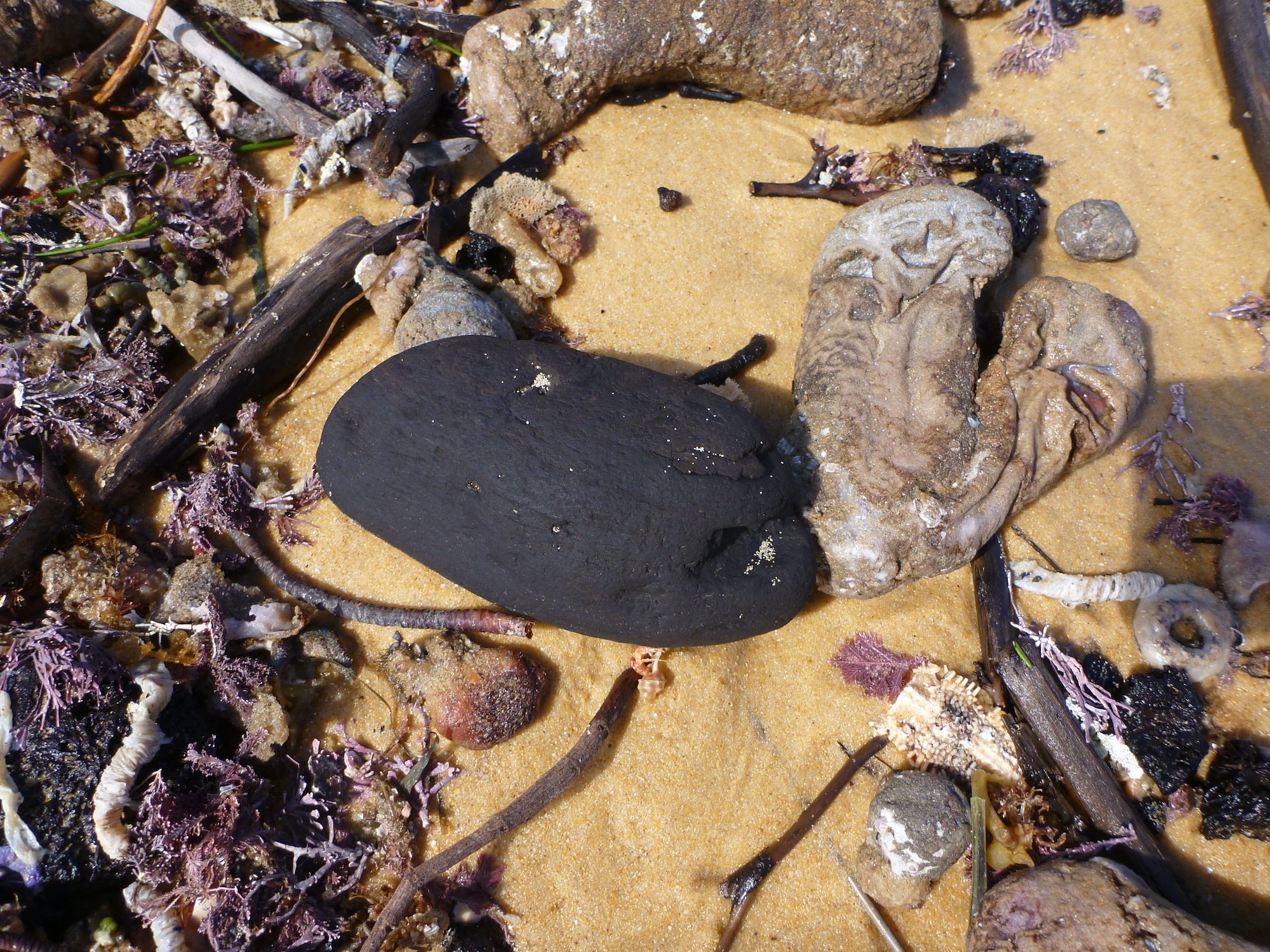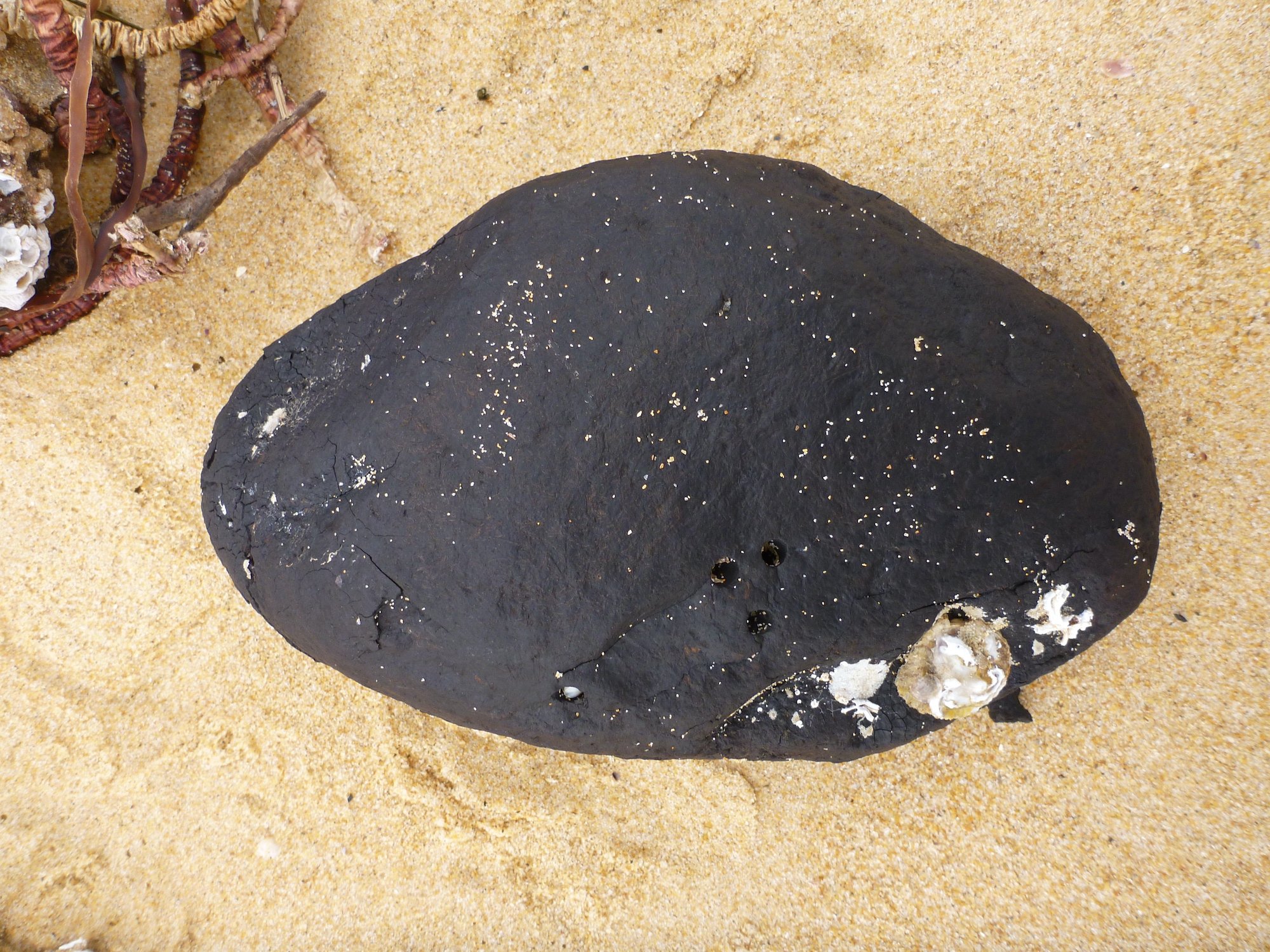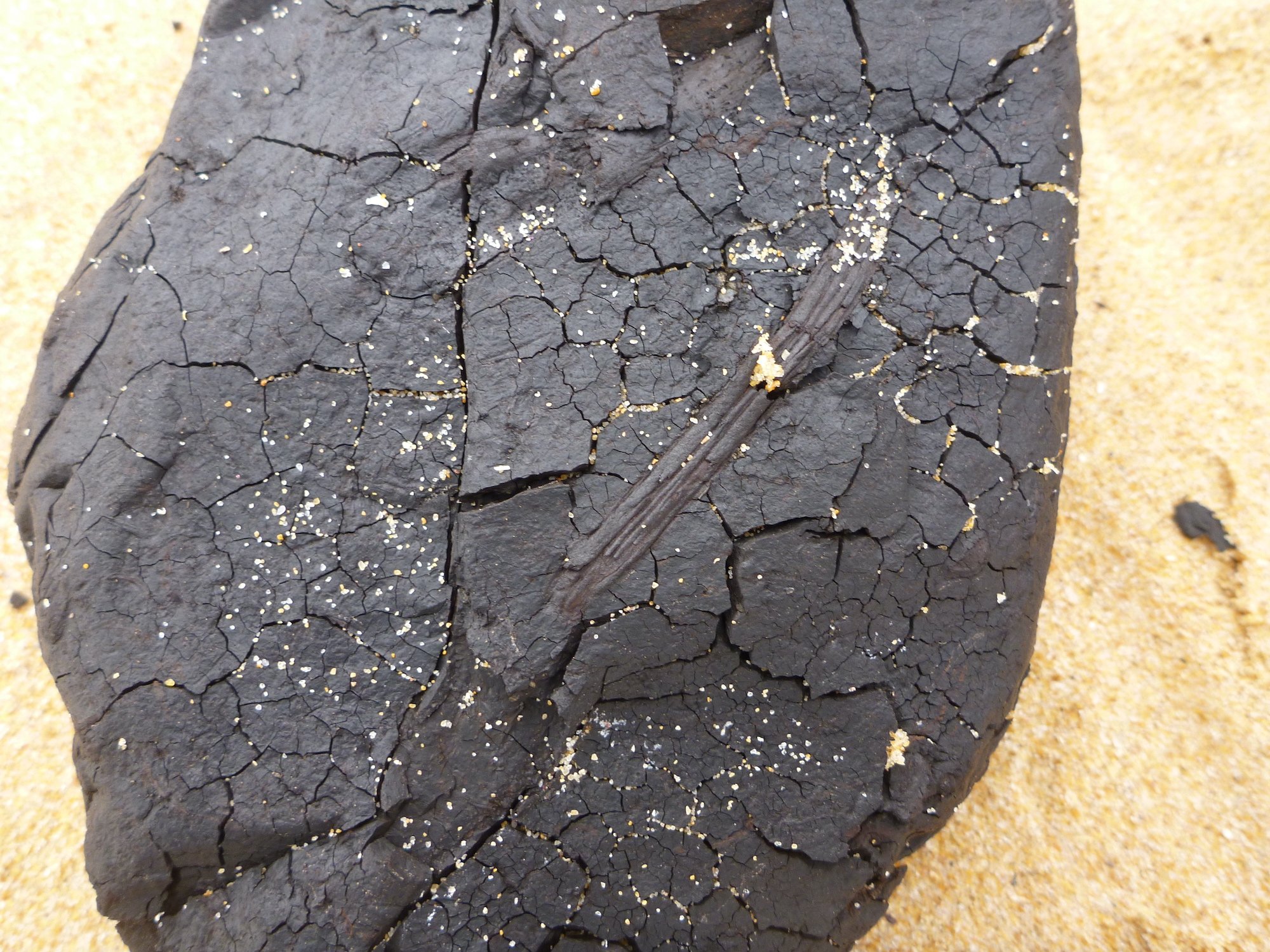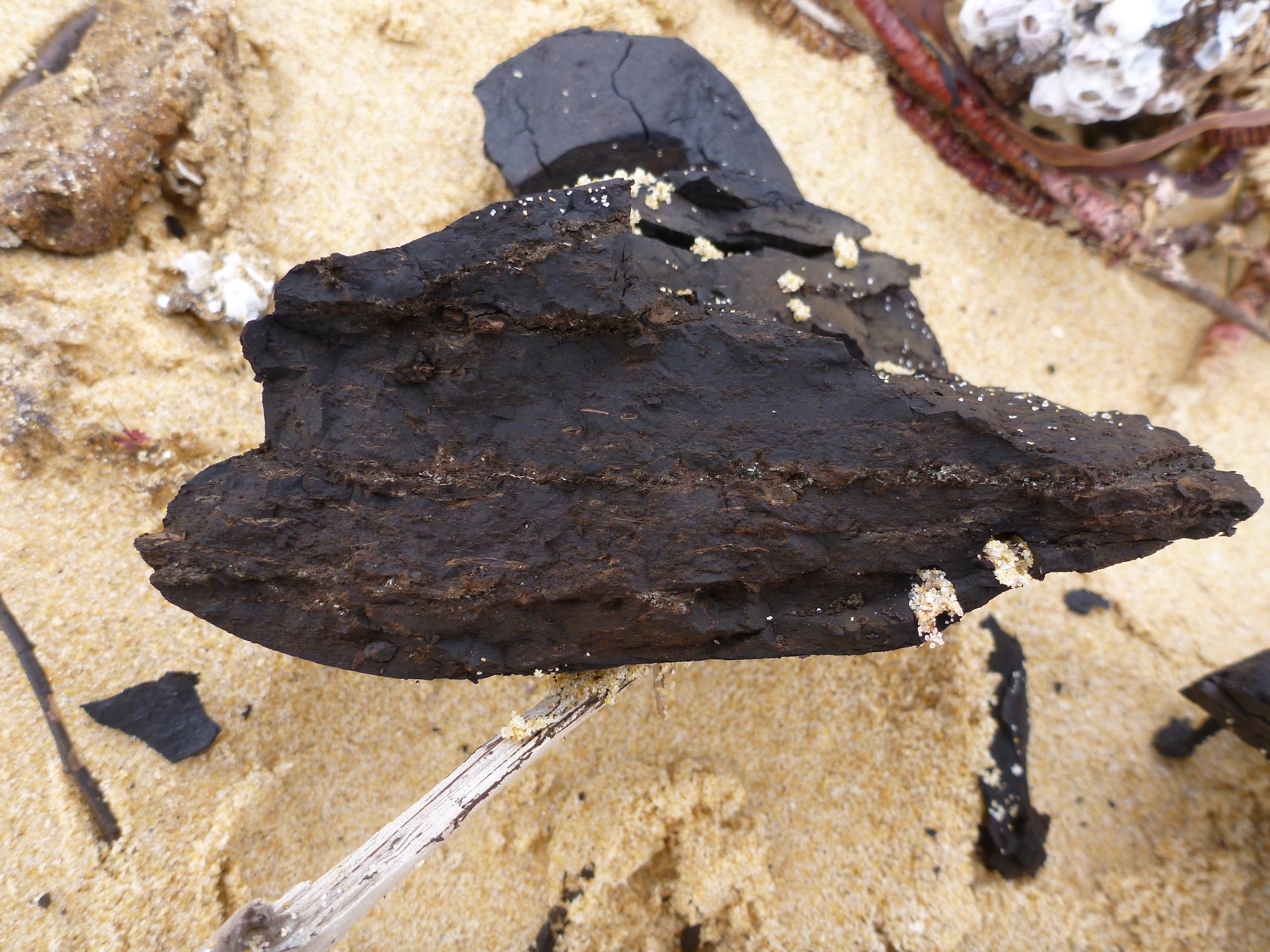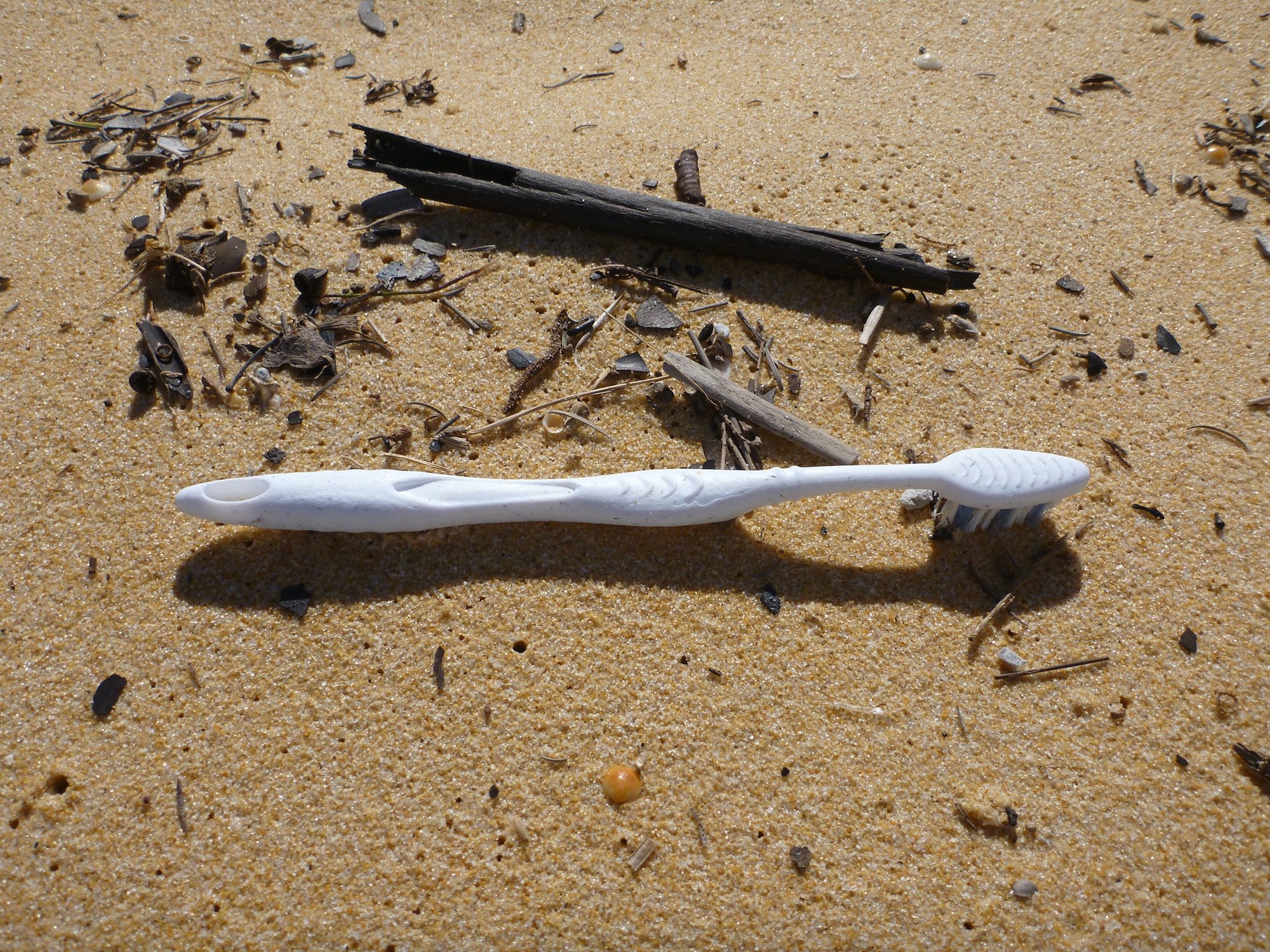Storm Strands - Wallagoot Beach, Bournda National Park, 5th April 2022
words and photos by Peter Collins
Sand cliff
Following the previous weekends heavy seas, on Tuesday, April 5th I used a brief fine weather window to walk the northern half of Wallagoot Beach in Bournda National Park. I accessed the beach from Hobart Beach campground, the road to Turingal Head being closed due to the rains. I headed for the mouth of Wallagoot Lake which opened during January. The dune on the southern side of the lake mouth has been eaten away by the huge southerly swell leaving a sand cliff over three metres high. That was not as surprising as the vast pongy raft of beach-cast lifeforms lying along the southern side of the lake channel. A few of the highlight finds are described below.
Wallagoot Beach sand cliff over 3m high, Turingal Head
Storm debris
The bulk of the debris was cunjevoi (mostly individual but also a few larger clusters). Also present in large numbers were posies of Sea Tulips, tufts of purple Coralline Algae, Sea Urchins, Spindle shells, Triton shells, Cartrut shells, Bonnet shells, Mussel shells, kelp holdfasts, and driftwood. Two things struck me about the assemblage. Firstly it was clear proof of the shear force of the swell, and secondly, many subtidal lifeforms had been ‘sampled’ from deep water — unusual things never usually brought ashore by an average storm.
Storm debris Turingal Head
Elephant Snail, Scutus antipodes
The shell of the Elephant Snail Scutus antipodes, the Shield shell, is usually found intact on ocean beaches. I’ve never seen one still attached to the animal and smashed to pieces.
Shattered Elephant snail
Wedding Cake Venus, Bassina (Callanaitis) disjecta
The Wedding Cake Venus Bassina (Callanaitis) disjecta is another stranger from deeper water. Like the Razor Clams, I have never seen a whole Wedding Cake Venus cast ashore alive, I’ve only ever found individual shells. This specimen was unsuccessfully attempting to rebury itself with its thin beige-coloured foot. It looked truly lost, its little foot scraping feebly at the damp sand.
Wedding Cake Venus , Bassina (Callanaitis) disjecta
Red (Stridulating) Hermit Crab, Strigopagurus strigimanus
Second in number only to the cunjevoi was a myriad of gastropod shells. Every second one or so had a Red (Stridulating) Hermit Crab Strigopagurus strigimanus tucked within. They were groggy but still struggling to regain the water. Most were still housed but one was dragging its naked back-end from shell to shell trying to find a new home. They would periodically make weird crackling and creaking sounds (the ‘stridulations’ for which they are named) with their claws.
Red (stridulating)Hermit Crab in Spindle shell
Southern Sand Star, Luidia australiae
Several central discs of the beautifully patterned Southern Sand Star Luidia australiae lay amongst the cunjevoi, this specimen being the most intact. There were arm fragmentsscattered about, perhaps enough to reassemble three or more whole sea stars. I have found dried fragments of this species at Turingal Head but the animal is notoriously fragile and the surf makes short work of them. The upper surface of this recently dead specimen had a pale yellow-orange ground colour with numerous random ossicles (of a type called paxillae) strikingly picked out in black.
Southern Sand star central disc fragment
Lignite?
Several lumps of black mineral were lying within the debris field. I have found similar lumps of this material at this location in the past but never more than one on any particular occasion.
Below are three photos of a similar lump found tossed ashore at Turingal Head after a storm in May 2017. They are well rounded and more solid than a clod of dirt yet could be broken apart by hand. Vegetable matter appeared imbedded within. My best guess is that this is some sort of lignite (brown coal). The 2017 specimen had marine growth on it suggesting it had been on the seafloor for some time. Exactly where they originate is a mystery.
Plastics
As I headed back down the beach a small group of Silver Gulls returned to fossick and gorge amongst the storm debris. Returning home I picked up my usual ‘three for the sea’ pieces of plastic rubbish. I could have easily ‘picked up thirty, the beach was so dirty’.
I’m not sure if the toothbrush and toothpaste belonged to the same person but I was tempted to walk the southern half of the beach as well to see if I could pick up a comb and disposable razor to complete the set.







